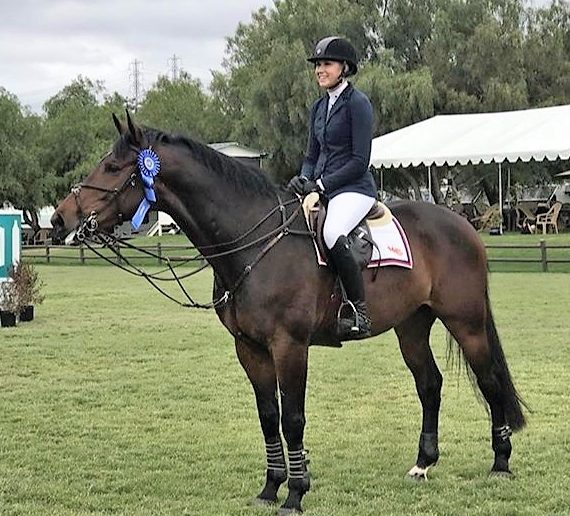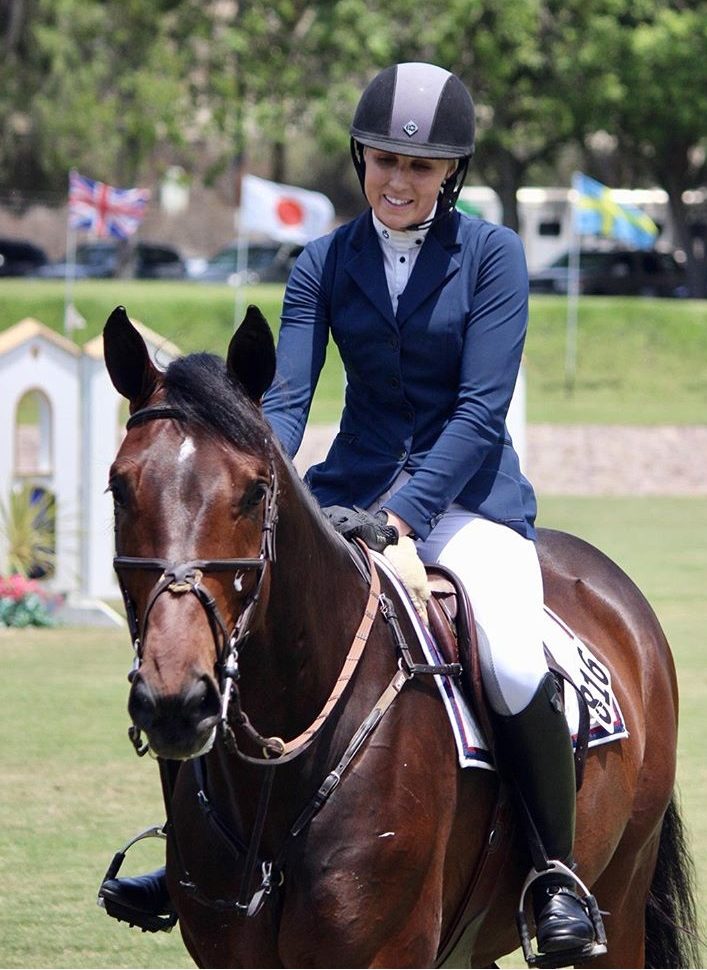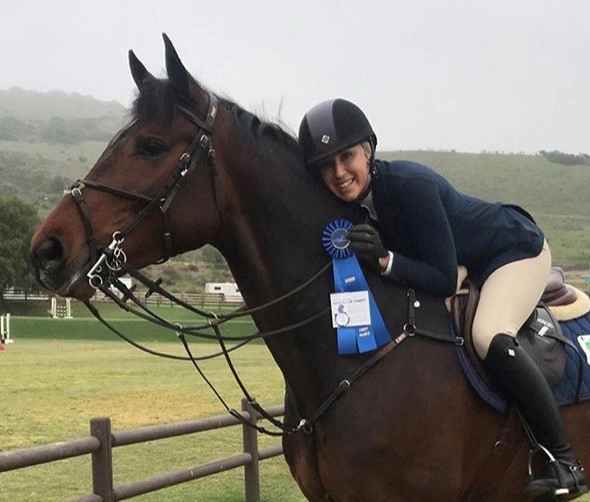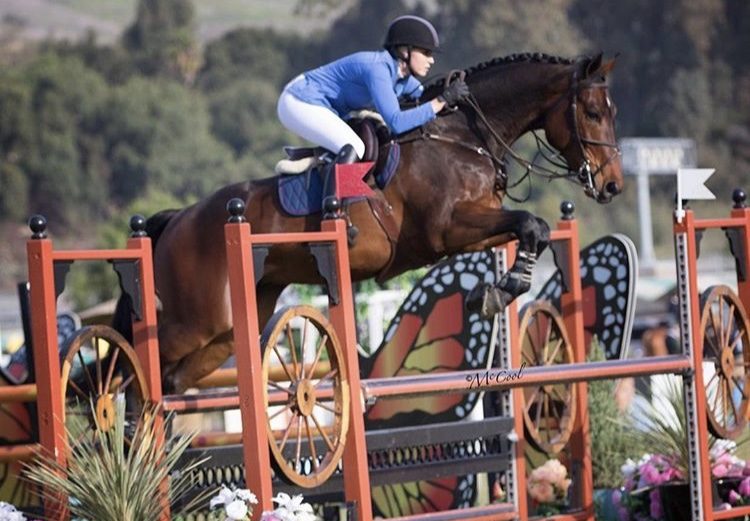Training young horses has its ups and downs. Some days are challenging, but ultimately, with patience and plenty of practice, the results are rewarding. With the Young Jumper program, Blenheim EquiSports has provided a more cost effective and encouraging environment for riders and trainers to teach their young horses to be competitive in the show arena. The program provides discounts on stall rates and free entries in many of the classes, as well as a championship in the fall. Many of the mounts who compete in these classes have bright futures as show jumpers, and their riders have high hopes for their success. Jamie Sailor, a popular presence in both the Young Jumper classes and Grand Prix arena, is one of the many trainers who takes advantage of this opportunity. Sailor has been working with Nibali Van De Klothoef, a gelding owned by Lisa Bell, and is competing him in the 5-Year-Old section this season. She plans to continue using the Young Jumper Program to develop his skills over the next few years, as she has successfully done with young jumpers before him.
 Horse’s show name, barn name and breed?
Horse’s show name, barn name and breed?
Nibali Van De Klothoef, aka ‘Nibbles’, is a Belgian Warmblood.
Trainer name and barn?
He is stabled at Mike Edrick Stables with trainer Mike Edrick. I am Mike’s assistant and have been riding Nibbles for two years now.
When Nibbles arrived in the states, he was unbroke. So I broke him and have been riding him ever since. He is definitely a powerful horse, so I put quite a bit of training into him (roughly 6 months), before we turned him out for almost a year to let his body grow and develop. When we started him back as a four year old, he was ready to go! I worked with his energy level doing some very small jumper classes until this year. This past winter, at HITS Coachella, he excelled beyond our expectations bringing home many clear round blue ribbons! He then showed at two weeks of Blenheim in April, where he continued his winning ways.
We gave Nibbles another break in his training after the Spring shows. He enjoyed chill time and turnouts until two weeks before the June Blenheim series. After more clear rounds and blue ribbons, he took another break until July. Starting July 1st, the five-year-old young jumpers begin to increase in jump height and have jump-offs. We just won our first official jump-off class this month at the Showpark Summer Festival!
What quality attracted you to this young horse the most?
His owner, Lisa Bell of Penny Lane Farm, gave us the go ahead to purchase a horse for future investment. We bought Nibbles as he was just turning three off a jump shoot video from Europe. His video became somewhat famous on social media because of his powerful jump and the suspension in his gaits. Plus he is one handsome horse, and I’m not just saying that because we picked him :).
How does Blenheim’s Young Jumper Series affect your horse’s development?
I love the young jumper program at Blenheim. Their courses are always fair for the age of each young jumper. I also love the break on the entry bills and stabling for the owners of a young hunter or jumper. It’s really nice to have show management on board with trying to develop young horses in the states. Nibbles will continue to jump the young horse classes through his 7-year-old year. Then when he’s 8, he can start in the Futurity classes for horses 10 & under, only offered at Blenheim, which I also think is great!


What is the most rewarding aspect of bringing along a young horse?
I love developing young horses because I’m working with a clean slate that is ready to learn. It’s fun to teach them something new and the next day they come out and remember it. Each horse develops at a different pace, in their own way. but that’s the fun in it. You do need to be patient! When I work with them from day one, I get learn all of their personalities.
What is your favorite exercise for a young horse?
My favorite exercise with young horses is lots of pole work with transitions in between the poles. I’ll just set random poles around the ring. It makes them want to look for the next pole but not rush to it because I’ll probably ask them to trot or walk before the pole. As their training develops, I will make the pole exercises harder by putting them closer together or making a figure-eight with the poles to land on the leads.

